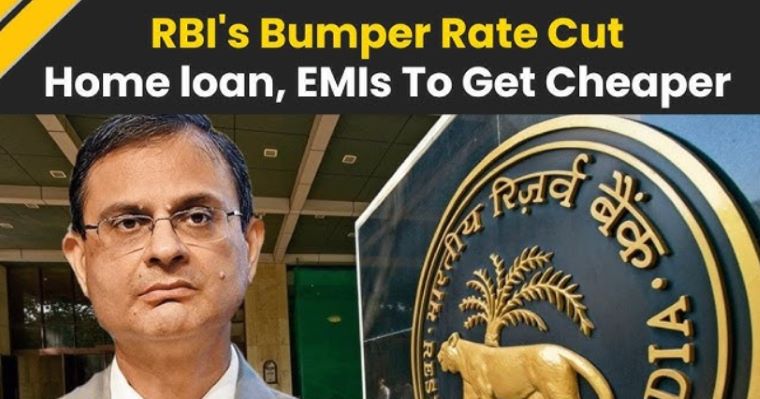RBI Cuts Repo Rate by 50 bps: What It Means for Home Loan EMIs and Borrowers
In a much-awaited move aimed at boosting economic activity and easing borrowing pressures, the Reserve Bank of India RBI cuts repo rate by 50 basis points (bps). This brings the repo rate down from 6.50% to 6.00%, marking the first rate cut of this magnitude since the pandemic-era stimulus years.
For millions of home loan borrowers, this decision translates into lower EMIs and significant interest savings — especially for those with floating interest rates linked to external benchmarks like the repo rate.
What Is the Repo Rate and Why It Matters
The repo rate is the interest rate at which the RBI lends money to commercial banks. A reduction in this rate leads to cheaper borrowing for banks, which in turn allows them to lower interest rates on loans extended to customers, including housing, auto, and personal loans.
This move is expected to stimulate housing demand, boost consumption, and provide relief to debt-laden consumers amid persistent inflation and rising living costs.
How Will EMIs Change for Home Loan Borrowers?
According to financial analysts, a 50 bps cut in the repo rate can lower EMIs on home loans by ₹800–₹1,000 per month, depending on the loan amount and tenure. Over a longer tenure, this change can lead to substantial savings.
Example:
- Loan Amount: ₹50 lakh
- Tenure: 20 years
- Old Interest Rate: 9%
- New Interest Rate: 8.5%
Monthly EMI drops from ₹44,986 to ₹43,391, resulting in:
- Monthly Savings: ₹1,595
- Total Interest Savings: ₹7.71 lakh over the entire loan term
(Source: Economic Times & Mint estimates)
Will Banks Pass on the Benefit Immediately?
Since October 2019, banks are required to link new floating-rate home loans to external benchmarks like the RBI’s repo rate. This means:
- Borrowers with repo-linked loans will see the impact within a few weeks.
- Borrowers with MCLR-linked loans may experience a delayed transmission depending on the bank’s reset cycle.
Major banks such as SBI, HDFC Bank, and ICICI Bank are likely to announce rate reductions shortly, with updated loan terms expected to be effective by the end of June 2025.
Tip for Existing Borrowers:
If your home loan is still linked to MCLR or base rate, now is a good time to:
- Request a switch to a repo-linked loan (may involve a conversion fee)
- Refinance your loan with another bank offering lower rates
Broader Market Impact
Beyond personal finance, the repo rate cut is also expected to:
- Boost real estate demand by making home loans more affordable
- Encourage first-time buyers to enter the property market
- Support construction and allied industries, contributing to job growth
What About Fixed Deposits?
While borrowers are celebrating, depositors may not. Interest rates on bank FDs are expected to fall, as banks adjust to the lower lending environment. Senior citizens and fixed-income investors are advised to lock in current FD rates soon, before further rate revisions.
Expert Opinion
RBI Governor Shaktikanta Das emphasized that the move aims to balance growth with inflation management, noting that core inflation has eased, allowing for some monetary flexibility.
Market analysts see this as a pro-growth signal, particularly supportive for the affordable and mid-segment housing market, which had been under pressure due to rising loan costs.
Final Takeaway
The RBI’s 50 bps rate cut is a welcome move for the Indian middle class, especially home buyers and borrowers, who will now enjoy lower EMIs, faster approvals, and potentially better credit terms in the coming weeks.
Borrowers are advised to monitor their bank’s announcements, check revised amortization schedules, and consider refinancing if they are not getting full benefit from the rate cut.

